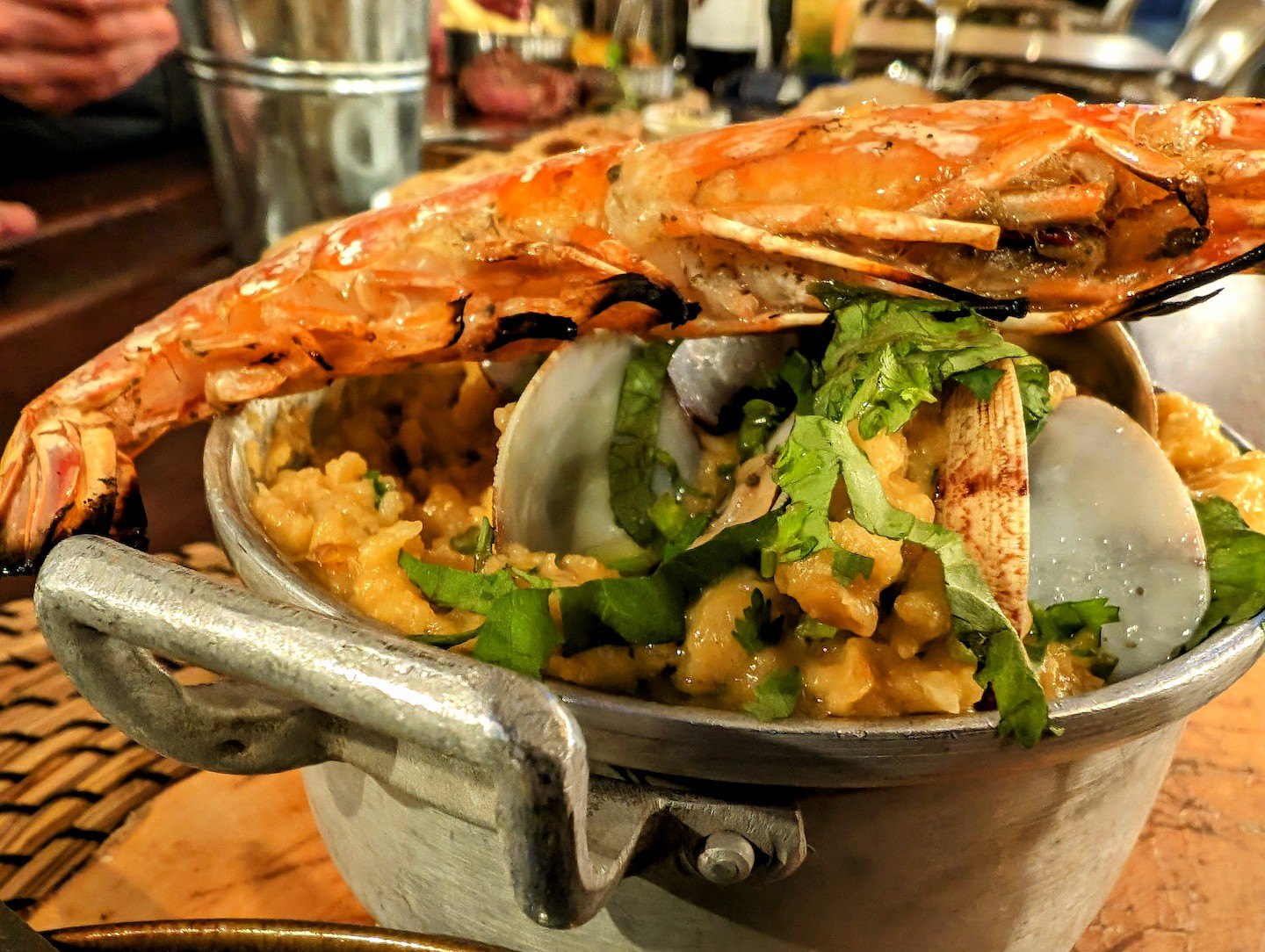The Origins of Açorda Alentejana

Historical Background
Açorda Alentejana is a traditional dish that reflects the rich culture of Portugal. It originated in the Alentejo region, known for its vast plains and simple yet hearty cooking. Historically, this dish was a way to use leftover bread, making it a staple during tough times. It was often made with just a few ingredients, like water, bread, and garlic, especially when olive oil was scarce.
Etymology and Linguistic Evolution
The name “açorda” comes from the Arabic word tharîd, which means “to break bread.” This term evolved through the dialects of the Iberian Peninsula, eventually becoming the Portuguese word we use today. The dish has deep roots in the region’s history, showcasing how language and food intertwine.
Cultural Significance in Alentejo
Açorda Alentejana is more than just a meal; it represents the identity and pride of the Alentejan people. It is often seen as a symbol of resilience, reminding locals of their agricultural heritage. Today, it is celebrated in homes and restaurants, serving as a connection to the past while adapting to modern tastes.
Traditional Ingredients of Açorda Alentejana

Key Components
Açorda Alentejana is a simple yet flavorful dish made from a few key ingredients:
- Day-old bread: Typically, pão Alentejano is used for its dense texture.
- Garlic: Fresh garlic adds a strong flavor.
- Cilantro: This herb gives a fresh taste to the soup.
- Olive oil: A generous amount is used for richness.
- Eggs: Often, a poached egg is added on top for creaminess.
Regional Variations
While the basic recipe remains the same, different regions may add their own twist:
- Açorda de Bacalhau: This version includes salted cod.
- Açorda de Marisco: A seafood variation popular in Lisbon, featuring shrimp.
- Porridge-like versions: In some areas, the bread is boiled in broth, creating a thicker consistency.
Seasonal Ingredients
Depending on the time of year, some ingredients may change:
- Spring: Fresh herbs and vegetables can be added.
- Winter: Heartier ingredients like potatoes or bell peppers may be included.
Açorda Alentejana is not just a dish; it reflects the Alentejo’s agricultural roots and the tradition of using every bit of food.
Preparation Methods for Açorda Alentejana
Step-by-Step Guide
- Soak the Bread: Start by soaking day-old bread in water or a light broth until it softens.
- Sauté Aromatics: In a pan, heat olive oil and sauté minced garlic and sometimes onions until fragrant.
- Combine Ingredients: Pour the sautéed mixture over the soaked bread, mixing well to infuse the flavors.
- Add Fresh Herbs: Stir in chopped cilantro for a fresh taste.
- Season: Add salt, pepper, and a splash of vinegar to enhance the flavor.
- Poach Eggs: For a creamy texture, poach eggs directly in the soup or serve them on top.
Common Techniques
- Rustic Preparation: The dish is known for its simple and rustic approach, making it easy to prepare at home.
- No Cooking Required: Unlike many soups, açorda is often assembled without extensive cooking, allowing the ingredients to blend naturally.
Modern Twists and Variations
- Seafood Additions: Some versions include seafood like shrimp or cod, turning it into a heartier meal.
- Gourmet Touches: In upscale restaurants, chefs may add unique ingredients or presentation styles to elevate the dish.
Its preparation reflects the rich culinary traditions of the Alentejo region, showcasing the importance of using every bit of food.
Home Cooking Tips
If you want to make Açorda Alentejana at home, here are some tips:
- Use Stale Bread: Day-old bread works best for texture.
- Experiment with Broths: Try different broths for varied flavors.
- Don’t Skip the Egg: A poached egg on top adds creaminess and richness.
Açorda Alentejana is not just a dish; it’s a culinary journey that connects you to the heart of Alentejo’s rich food culture.
Nutritional Value and Health Benefits
Calorie Count
Açorda Alentejana is a hearty dish, typically containing around 300-400 calories per serving. This can vary based on the ingredients used, especially if you add more olive oil or other toppings.
Nutritional Breakdown
The soup is rich in several key nutrients:
- Carbohydrates: Mainly from the bread, providing energy.
- Proteins: Eggs and any added meats contribute to protein content.
- Fats: Healthy fats from olive oil, which is a staple in Mediterranean diets.
- Vitamins and Minerals: Ingredients like garlic and herbs add essential vitamins and minerals.
Health Benefits of Key Ingredients
- Olive Oil: Known for its heart-healthy properties, it can help lower bad cholesterol.
- Garlic: Has anti-inflammatory and immune-boosting effects.
- Bread: Provides fiber, which is good for digestion.
Açorda Alentejana: How To Enoy It
Pairing with Wines
When enjoying Açorda Alentejana, the right wine can elevate the experience. Here are some great pairings:
- White Wines: A crisp Vinho Verde complements the soup’s flavors well.
- Red Wines: A light red, like a Pinot Noir, can also work nicely.
- Rosé: A dry rosé adds a refreshing touch.
Serving Suggestions
To make the most of your Açorda Alentejana, consider these serving tips:
- Serve it hot, right after preparation.
- Garnish with fresh cilantro for added flavor.
- Pair with crusty bread for a delightful texture contrast.
Cultural and Social Aspects
Açorda Alentejana is more than just a dish; it’s a part of the Alentejo culture. It’s often enjoyed during family gatherings and celebrations. Sharing this soup brings people together, reflecting the region’s rich agricultural history that connects people to the land and its history.












